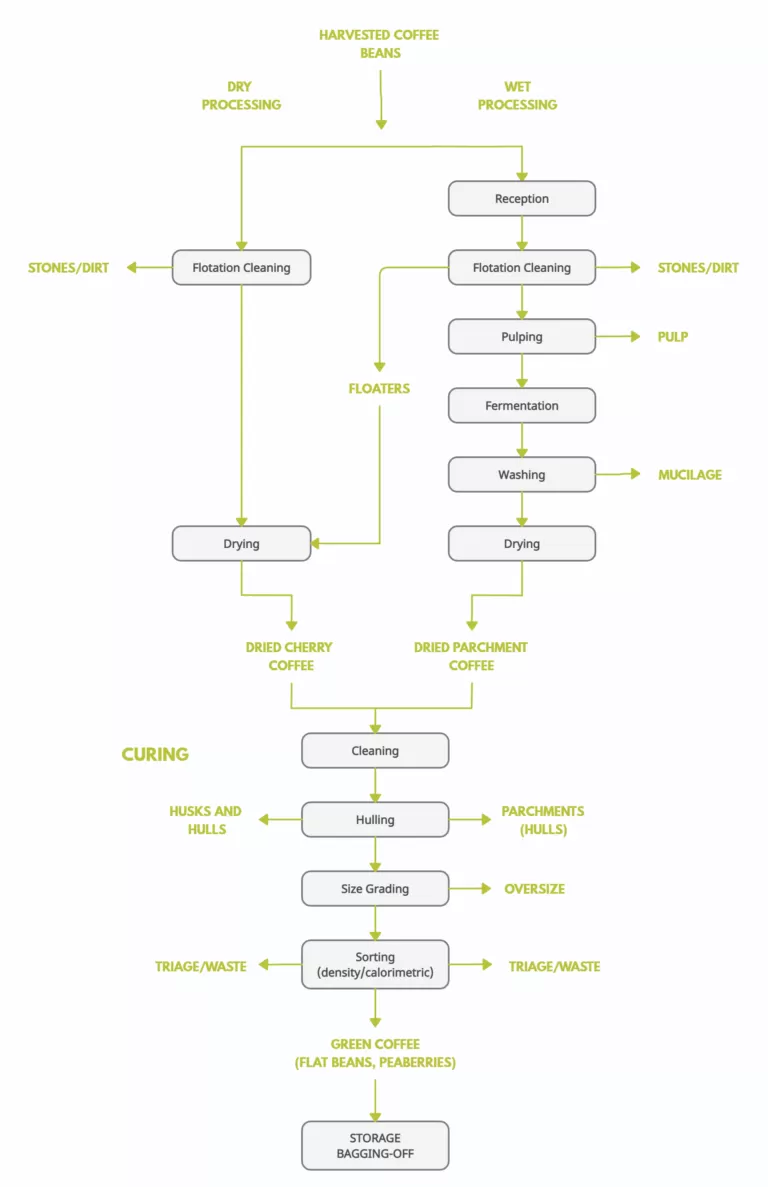Harvesting and Processing
- Abbarci Industries Limited
- About us
- Harvesting and Processing
SELECTIVELY PICKING
This is an intensive process that involves skillfully picking only the green/red cherries by hand and is mostly followed for picking the finer Arabica beans. A small percentage of undesirable cherries get picked even by the most skilled labourers.
STRIPPING
This method is used for picking beans that are meant for mass consumption. You need to hold the branch and pluck all the beans at once dropping them over on large sheets of polythene. Both ripe and unripe beans are picked while stripping. This is followed for picking both Arabica and Robusta variety coffee beans that grow in large bunches and processed for mass consumption.
MECHANICAL HARVESTING
The only thing that cannot implement this method for coffee grown on hills however, for countries like Uganda, which has a relatively flat land uses tools to harvest the crop. In this method too both ripe and unripe coffee beans are plucked.
WET PROCESSING
Water is used primarily in this method to process coffee which involves “washing” the green coffee beans to remove the coffee’s fruity material while the coffee bean is still moist. The coffee thus produced is called fully washed coffee. Arabica coffee and specialty coffee, in areas with abundant supply of fresh water, is mostly processed using this method.
Wet processing in general is said to produce the best taste in the cup of a brewed coffee, and also helps to ensure a bright, shining acidity. One unfortunate effect of wet processing is that it causes the coffee to lose much of its body size.
DRY PROCESSING
It is one of the oldest method of drying coffee by placing the beans directly under the sun. This method uses very little to no water to process the beans and is adept in areas with adequate sunlight during the dry weather and least possibility of rains. The harvested beans are usually cleaned and sorted, to separate the unripe, overripe and damaged beans and to remove its dirt, soil, twigs and leaves.
As time passes by, the usual process has become considered as a lower-quality method that can produce to a incompatible flavours. This kind of inconsistency is often the result of an unripe fruit drying and the color is turning brown alongside with the ripe fruits. Almost all Robusta are processed by this kind of method. It is not feasible in a very rainy regions, where the humidity of the atmosphere is as its peak or where it rains constantly during harvesting.

